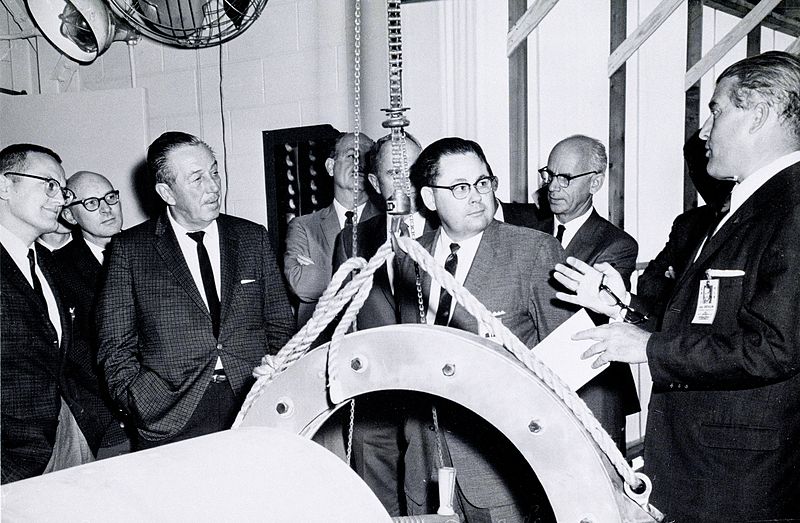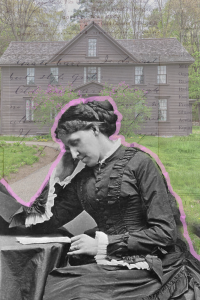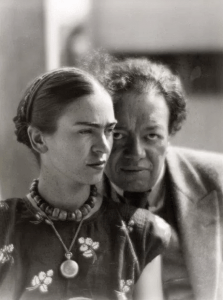Families throughout the United States faced hard times during the late-1930s. People were still recovering from the effects of the Great Depression, unfulfilled promises from President Roosevelt’s New Deal, and unemployment.1 During these financially troubled times, two dreamers, brothers Roy and Walt Disney, were on a mission to continue to produce quality animation on a fixed budget. After Fantasia‘s disappointing initial grossing, Disney Animation Studios’ debt was edging toward $3 million, which led to Walt Disney cutting all of his animators’ salaries. Although Roy Disney believed that this would undermine everything the two had built, he realized the only alternative was to sell their films through a franchise or file for bankruptcy, and so he agreed to the arrangement, unaware of the wrath that would follow.2

Tensions rose as animators also noticed a change in Walt Disney’s attitude toward them. The once cheerful man who was full of magic soon lost that touch, becoming distant to the people around him. Walt began to take all the credit for the animations that were being produced, and his employees soon realized that their pay was much lower than Disney’s salary. His ‘in-betweeners’ and clean up men were making $20 at the most, while his animators, ranging from amateurs to professionals, made between $75 and $300 weekly. Walt brought home a salary five times what his highest paid animators were bringing home.3
These pay disparities led his beloved animators to walk out on the company. On May 28, 1941, employees were greeted by hundreds of their coworkers waving signs preventing them from entering the studio. Although the exact number of employees who went on strike differs between sources, it is estimated that roughly one-third of the 1200 employees went out that morning. For the first few days of the strike, employees exchanged jokes and banter. The animators held up picket signs with clever illustrations that depicted their true emotions. One that struck deep to the studio was a picture of Walt Disney’s face in a cartoon style with crossed eyes and the caption “I can’t see why they’re unhappy.”4 Walt refused to give in to the demands of his employees, because he did not feel that they needed the increase in pay. This firm stance left the strike to go on for five whole weeks, tearing apart the company’s unity. This tension led Walt to leave for South America to take some time away from work, while he let go almost half of his team. After a bank representative for the company stepped in to review the case, the studio was sustained in favor of the animators leading to the dispute being settled. Though a treacherous three and a half months had passed, work finally resumed at the studio in Burbank, California with 694 employees on September 16, 1941.5

Just as everything seemed to be falling into place, the unimaginable happened. On December 7, 1941, the Japanese Navy Air service struck down on the United States naval base in Pearl Harbor sending the United States into World War II. Panic set in for the animators again as the cost of the films being produced during this time put a damper on the company’s overall budget.6 During this time, Walt and his company were sought out to produce cartoons for the armed services as morale builders. They also used half of the animation studio to house antiaircraft troops that were fighting during World War II. Although the company seemed to be taking on too much, this engagement would inspire Walt to create a few propaganda short films and war posters of his own that would speak to the people of the United States. Of all of the animation produced during the war, the most notable piece was Der Fuehrer’s Face, an animated short film in which Donald Duck dreams he is working in a German factory, all while ridiculing Adolf Hitler. The combination of housing troops in the studio, producing short films that expressed the idea of America’s freedom, and the efforts to inspire those fighting for the United States broaden the brand as a whole, showing every single American know what the Disney company stood for at the time.7
Though Walt himself did not find very creative success regarding his work toward the government propaganda animation and posters, it paid off very well for the company, raising its reputation and generating profits. The animation studio’s contributions to America during the World War II brought smiles with their comedic satire to families struggling to find hope as their loved were out serving their country. Soon after, they produced notable works such as Bambi (1942), Song of the South (1946), and Cinderella (1950), with Cinderella generating enough gross profit to pull the company out of debt and further establish their brand. Had both the strike and Walt lending a hand during the war not happened to the Walt Disney Animation Studios, Walt and Roy Disney may not have been able to sufficiently pay their ‘on the edge of leaving the company’ employers and the bills that came with owning the animation studio. The studio itself could have shut down permanently, never transforming from two passionate brothers’ project to a multi-billion dollar brand that brings magic fans and families all across the globe.
- The Hutchinson Unabridged Encyclopedia with Atlas and Weather Guide, 2018, s.v. “The USA in the 1930s.” ↵
- Neal Gabler, Walt Disney: The Triumph of the American Imagination (New York: Knopf, 2006), 350-351. ↵
- Neal Gabler, Walt Disney: The Triumph of the American Imagination (New York: Knopf, 2006), 355. ↵
- Steven Watts, The Magic Kingdom: Walt Disney and the American Way of Life (Boston: Houghton Mifflin, 1997), 209 ↵
- Neal Gabler, Walt Disney: The Triumph of the American Imagination (New York: Knopf, 2006), 367-371 ↵
- Barry Keith Grant, “Walt Disney Company,” Schirmer Encyclopedia of Film, Vol. 4, (New York: Schirmer Reference, 2007), 331-336. ↵
- Paul Lagasse, “Walt Disney,” The Columbia Encyclopedia, 8th ed. (Columbia: Columbia University Press, 2018) ↵



94 comments
Dylan Miller
As someone who looked up to Walt Disney as a kid, it’s shocking to see such a horrifying story caused by Walt himself. It’s rare to find articles and stories that portray Walt as his true self, mainly because of Disney’s tight grasp on their history, as it is easier to find articles and documentaries about Disney’s failed rollercoasters, movies, and even marketing ploys that caused a significant loss of money for the company. The propaganda that the Disney company has made is brutal to find since they’re not on Disney’s streaming service, Disney+, but some of them, like the cartoon Donald gets Drafted, can be found on YouTube. It’s saddening to see someone like Walt, who strived for constant change to his parks to make it a happy place for all, refuse to give the animators and employees who make the cartoons that keep the company alive little to no pay because he “felt they didn’t need it.”
Mckenzie Gritton
I have always loved Disney movies, but it is really sad that the workers got paid so little while he took home 5x their salary. Don’t even get me started on the fact that he left to South America when his workers demanded a higher pay, but at least it was settled in favor of the animators. It was also interesting to read that Disney had a big contribution with the propaganda and housing troops during WWII.
Serenity Kamenski
The thing about Disney is that you never really read articles regarding their struggles and issues they had as a company before they became successful. Today, there’s always this glorification of Disney and how they are this super successful corporation, leaving out how they were in debt a majority of their beginning years, or the way they treated their workers as a response to their inability to profit. They cut salaries, took credit for their work, and almost didn’t come to terms with the animators demands, showcasing a not so humble beginning. Great article by the way, it was very informative.
Erick Velazquez
The struggles this company had when it was much smaller in popularity is very interesting. Being three million dollars in debt is no joke but cutting their animators salaries was very greedy of Disney. Though the company did struggle, they found a way to rise in popularity by means of propaganda and animations during World War Two and became one of the single most popular companies we know today. Really enjoyed the article!
Maria Ferrer
This is an interesting article! When we think of Disney and its animations, we see many successful titles and movies, and we forget that all successful companies had their ups and downs. It was surprising to read about Disney not having enough money to pay its animators, and they proceeded to go on strike for five whole weeks. Finally, I was unaware that Disney produced cartoons for the armed services for moral builders during World War II, which I find incredible. I liked the topic of this article because the author showed us a different perspective about Disney animations and that many people aren’t aware of.
Shanita Frazier
I really loved this article. I think that the Disney brothers are great and was important part of the war effort because it boosted their morale. The studio was very successful and it contributed to American history well. I really like that people want to send their congratulations to the company that makes me think that there is still some hope in the world. Very good!
Julia Aleman
This is a really interesting story that I’ve never heard. I almost forget that Walt Disney was around during the time of World War 2 and I never knew that there was such a big effect that it put on the income. I do believe that Disney was being pretty greedy with the salaries of the workers but I never knew how big of an impact his films made on the people of this time.
Nathan Castillo
Never did I expect to see how Disney played a role in the war effort during World War 2. It was really cool to hear about how animations can boost morale throughout the field. It was really sad to hear about how the employees were treated early on in the article, but in the long run, they are one of the most successful and well known business out there.
Sophia Rodriguez
This article is really interesting I had not known a lot about Walt Disney and his brother, but reading this I realized the struggle they had gone through just to keep pushing forward. I never knew that he cut the staffs money and he gave it to himself along with the workers going on strike. Reading this I learned that Cinderella was their breaking point to get back into business and the comics Walk Disney made about the war saved their company.
Elizabeth Santos
This article just goes to show that all successful things take time, effort, and getting over many bumps in the road. It’s interesting how substantial the role of the war played on Disney, and how significant Disney animations were to the nation, providing some ease in a time of much distress. Although, it is depressing that the workers weren’t getting proper payment despite their grand talents that really made the idea of success possible.